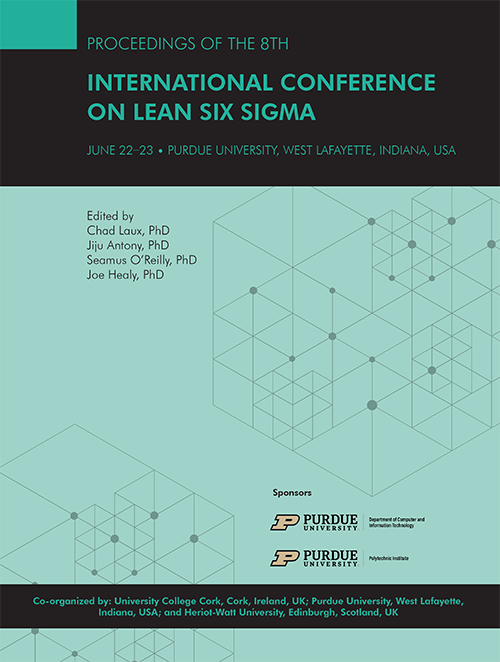Abstract
This case study showcases the use of statistical tools to develop an objective Squeak and Rattle (S&R) measurement and detection test for End Of Line (EOL) sign off in an automotive manufacturing environment. Audio Induced S&R is an unwanted vibration within the vehicle caused by the sound system, impacting on customer perception of vehicle quality. Testing for S&R in an automotive environment has a key challenge; how to robustly detect a rattle at the EOL and thus prevent plant escapes to the customer. The objective test developed used microphones and analysers in order to replace an e subjective listening test. Within the testing equipment settings, the length of the frequency sweep and the volume level of the sweep can be adapted, which in turn influences the output graph of calculated rattle. A Design of Experiment (DOE) was employed to find the optimised parameters required for these factors. The DOE concluded that the volume parameter should be set to 90dB and a time should be set to 5 seconds for future testing. A pilot study was then carried out using these settings on 16 vehicles, which highlighted the capability of the objective test to identify both consumer and producer risk. The pilot study helped to set the pass/ fail limit for future use at the EOL. This paper showcases an example of using statistical tools for a practical industrial application in an automotive environment, to improve customer quality and to reduce cycle time, process variability, rework, plant escapes and warranty.
DOI
10.5703/1288284317334
Recommended Citation
Hartley, Orla, "Rattle Detection – An Automotive Case Study" (2021). International Conference on Lean Six Sigma. 6.
https://docs.lib.purdue.edu/iclss/2021/sectors/6
Included in
Audio Arts and Acoustics Commons, Automotive Engineering Commons, Design of Experiments and Sample Surveys Commons, Manufacturing Commons
Rattle Detection – An Automotive Case Study
This case study showcases the use of statistical tools to develop an objective Squeak and Rattle (S&R) measurement and detection test for End Of Line (EOL) sign off in an automotive manufacturing environment. Audio Induced S&R is an unwanted vibration within the vehicle caused by the sound system, impacting on customer perception of vehicle quality. Testing for S&R in an automotive environment has a key challenge; how to robustly detect a rattle at the EOL and thus prevent plant escapes to the customer. The objective test developed used microphones and analysers in order to replace an e subjective listening test. Within the testing equipment settings, the length of the frequency sweep and the volume level of the sweep can be adapted, which in turn influences the output graph of calculated rattle. A Design of Experiment (DOE) was employed to find the optimised parameters required for these factors. The DOE concluded that the volume parameter should be set to 90dB and a time should be set to 5 seconds for future testing. A pilot study was then carried out using these settings on 16 vehicles, which highlighted the capability of the objective test to identify both consumer and producer risk. The pilot study helped to set the pass/ fail limit for future use at the EOL. This paper showcases an example of using statistical tools for a practical industrial application in an automotive environment, to improve customer quality and to reduce cycle time, process variability, rework, plant escapes and warranty.






